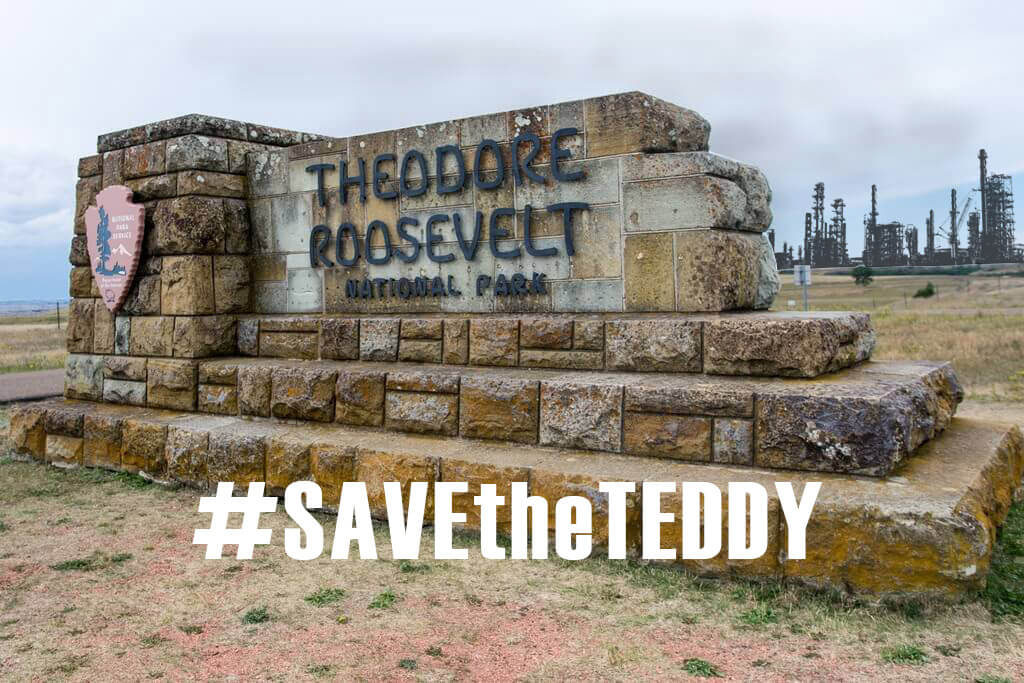DRC legal action calls out North Dakota Dept. of Health for letting Davis Refinery dodge rigorous environmental review.
Dakota Resource Council, along with National Parks Conservation Association and the Environmental Law and Policy Center filed a court appeal challenging the air quality permit issued by the North Dakota Department of Health (NDDoH ) on the proposed Davis refinery project sited just three miles from the border with Theodore Roosevelt National Park.
Unfortunately, the state appears to be willing to let Meridian get by with its bland assurances that its emission controls will be good enough to meet the law’s requirements.
The appeal targets NDDoH’s classification of the 27,500 barrel-per-day refinery as a “synthetic minor source of air pollution.” Their classification of the refinery as a minor pollution source, rather than major allows the development to dodge a more rigorous environmental review. Read below about how the flawed air quality permit puts one of America’s most pristine natural landscapes (and North Dakota’s most popular tourist draw) in danger.
Flawed Air Permit Issued for Proposed Refinery Near Theodore Roosevelt National Park
Written by Jeffon Seely of Dakota Resource Council.
Medora, ND – The North Dakota Department of Health (NDDoH) today issued a permit allowing construction of Meridian Energy Group’s proposed Davis Refinery to move forward, risking harm to nearby Theodore Roosevelt National Park. More than 11,000 people wrote to the agency about the refinery, the majority raising concerns against the proposal. National Parks Conservation Association, the Environmental Law & Policy Center and the Dakota Resource Council called the health department’s action a failure to protect Theodore Roosevelt National Park.
The question is not whether this new source of pollution will do additional harm to the park – but rather how much.
“We are deeply concerned about the impact of air pollution from the proposed refinery on Theodore Roosevelt National Park,” said Stephanie Kodish, Clean Air Program Director for the National Parks Conservation Association. “The park’s air quality is already hurt by pollution, limiting views, damaging ecosystems and making the air less healthy for visitors to breathe. The question is not whether this new source of pollution will do additional harm to the park – but rather how much.”

The Permit to Construct classifies the industrial refinery as a “minor” rather than “major” source of pollution, allowing it to bypass requirements to evaluate and use the best emission control technologies.
“The Clean Air Act has strict requirements for large new sources of pollution,” said Scott Strand, Senior Attorney at the Environmental Law & Policy Center. “The law requires the states to make sure that facilities with significant potential to pollute our air will have the best available pollution control technology in place. Unfortunately, the state appears to be willing to let Meridian get by with its bland assurances that its emission controls will be good enough to meet the law’s requirements.”
The permit comes amid controversy over Meridian’s refusal to undergo siting review with the state’s Public Service Commission, which is required for refineries over 50,000 barrels per day. The NDDoH permit sanctions up to 55,000 barrels per day at the refinery.
The failure of the NDDoH to hold Meridian accountable for the company’s stated goal of 55,000 bpd means the North Dakota Public Service Commission’s responsibilities become even more critical. Local members of Badlands Area Resource Council (BARC), an affiliate of DRC, are now asking the PSC to protect their land, water, air, and quality of life by requiring Meridian to apply for a siting permit. Most BARC members live close to the proposed site. Linda Weiss, Chair of BARC said, “The placement of this refinery next to a Class I Airshed not only destroys the air quality today but will continue to destroy air quality for years to come. The cumulative air pollution from the many facilities in the industrial area will jeopardize health and safety of people who live here.”
The groups are carefully evaluating the permit to determine their next steps.
Theodore Roosevelt National Park stands as a testament to America’s conservation legacy and the very president who helped shape it. The park welcomed more than 700,000 visitors in 2017 who spent over $47 million in nearby communities, supporting over 550 local jobs.

